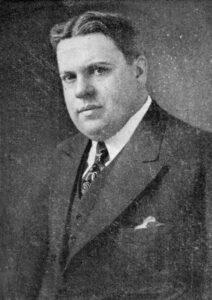Table of Contents
Imagine a world where music wasn’t a click away but a treasure spun from shellac and steel. This was the landscape Henry Burr navigated, a Canadian-born tenor who became one of the most prolific recording artists of the early 20th century. His voice, with a unique, almost nasal charm, filled countless homes throughout the country, preserving the melodies and sentiments of a rapidly changing world.

a-1640xl
pc065135
09-05-02
Burr’s Career and Impact
In the early days of the recording industry, it wasn’t uncommon for artists to work under a variety of names. Henry Burr was no exception, lending his voice to projects under pseudonyms like Henry Gillette, Alfred Alexander, and others. This practice allowed for greater output and sometimes helped tailor a singer’s image to fit a specific genre or project. For Burr, it meant flexibility, the chance to explore different styles and perhaps even a hint of playful mystery surrounding his true identity.
Burr’s recording career was astonishingly prolific. Estimates suggest he participated in over 12,000 recordings – a testament to his popularity and the hunger for recorded music in the early 20th century. His voice became a familiar presence in homes across America, shaping the nation’s musical tastes. Imagine the excitement of a new Burr record arriving at the local music shop, promising a fresh dose of familiar comfort or the thrill of a captivating new melody.
Burr’s vast catalog includes beloved classics that still hold a nostalgic charm today. Songs like “In the Shade of the Old Apple Tree,” with its imagery of simpler times, and “Just a Baby’s Prayer at Twilight,” with its touching, almost heart-wrenching lyrics, became cornerstones of early popular music. His skill with sentimental ballads made him a favorite in countless American homes. Additionally, his duets with fellow tenor Albert Campbell, such as the wistful “Till We Meet Again” and the jaunty “I Wonder Who’s Kissing Her Now,” showcase the vocal harmonies of the era and added to his repertoire of hits. These songs aren’t just musical time capsules; they offer a glimpse into the hopes, dreams, and perhaps anxieties of a nation on the cusp of sweeping change.
Burr’s Voice and Style
Even within the limitations of early acoustic recording, Burr’s voice possessed a distinctive quality that cut through the static. Often described as nasal, it nevertheless carried a surprising resonance. This forward, almost brassy, placement allowed him to project over the limited fidelity of the era’s recording technology. Imagine striving for clarity while recording into a large horn, the need to sing with precision and power to be truly heard.
Burr’s tenor range and style embodied the emerging trend of the “crooner.” Unlike the booming voices of earlier operatic tenors, his delivery was softer, warmer, and more intimate, well-suited to the sentimental ballads he favored. Think of a softer, less-vibrato-heavy counterpart to contemporaries like Billy Murray. This softer approach invited the listener into a shared emotional experience, a key element in the popularity of early popular music. It was a voice that could carry both a wistful sigh and a joyful exclamation.
Burr’s success also speaks to his ability to adapt to the demands of acoustic recording. To be fully captured by the recording horn, singers had to develop a strong, forward projection, often emphasizing certain vowels or consonants. Burr’s recognizable, slightly nasal tone might be partially attributed to this technical adaptation, making his voice stand out even amongst the limitations of the technology. His success is a testament to both his natural talent and his understanding of the evolving art of recording.
Burr’s Legacy
Henry Burr’s prolific career coincided with the rise of the recording industry itself. He embraced the possibilities of the phonograph and gramophone, recognizing the power of these new technologies to preserve music for generations to come. His vast catalog is a testament to his willingness to experiment and adapt in a rapidly evolving landscape. There’s a sense of excitement in this, of venturing into the unknown with a spirit of exploration.
More than just a popular singer, Burr’s recordings offer a precious sonic snapshot of the early 20th century. The songs he sang, both beloved standards and long-forgotten melodies, reflect the tastes, anxieties, and hopes of a society on the brink of profound change. His voice, with its distinctive character, becomes a time traveler’s guide to the world of parlors, nickelodeons, and the dawning age of mass media.
